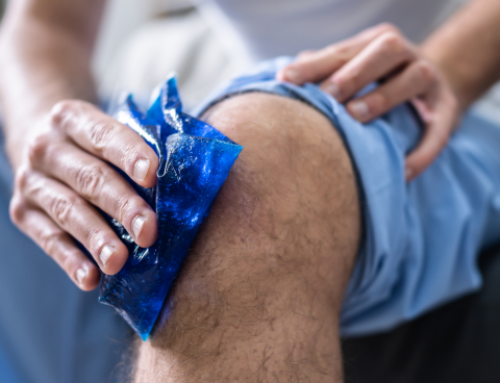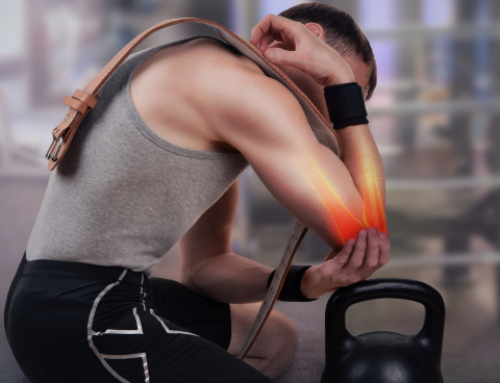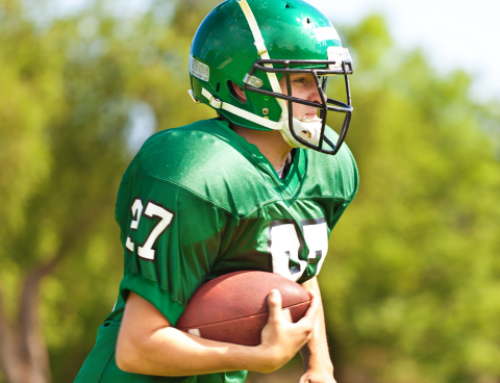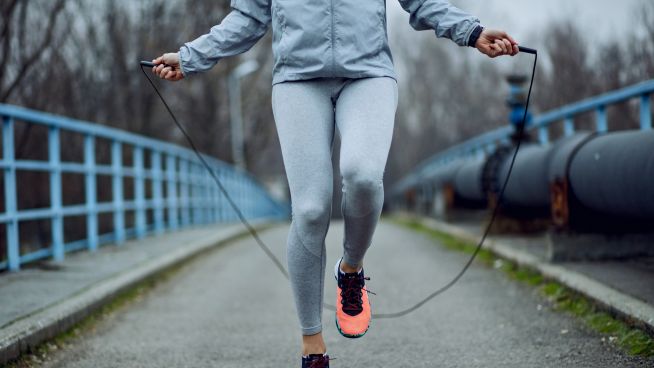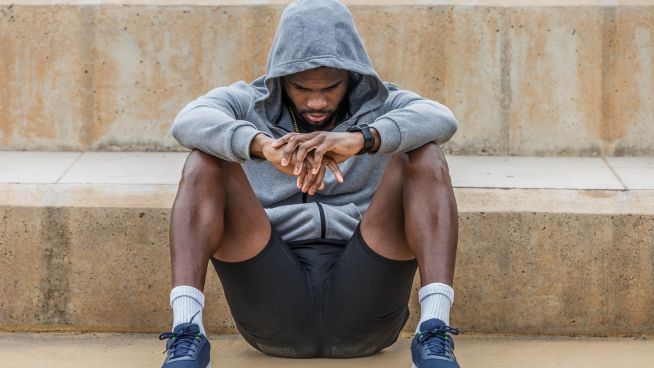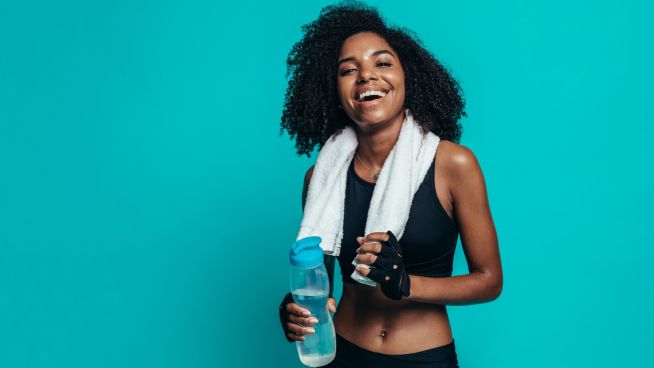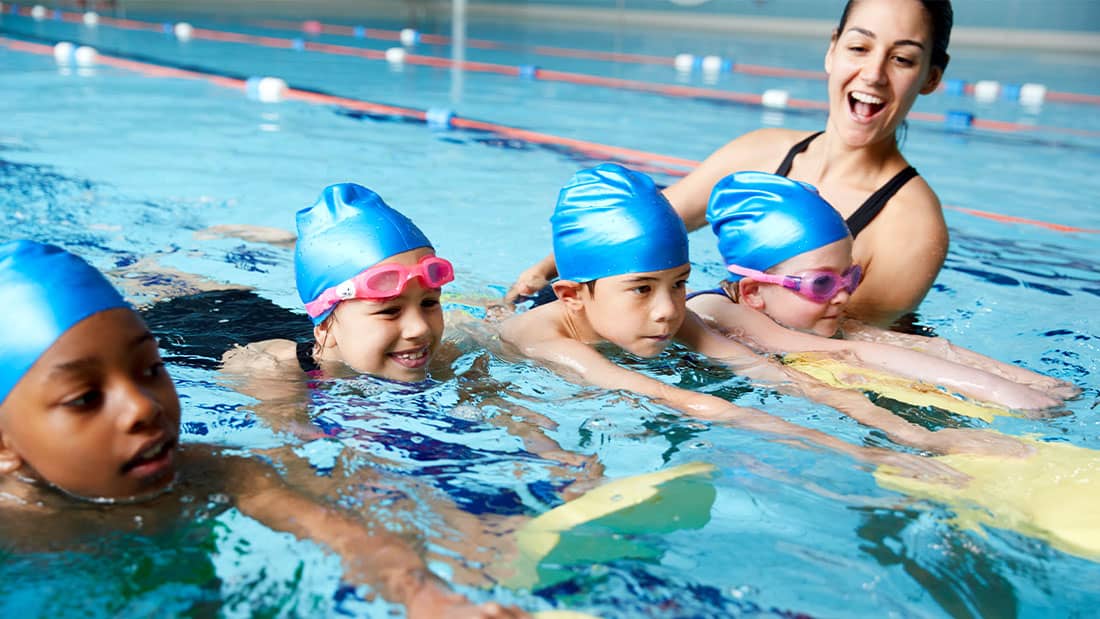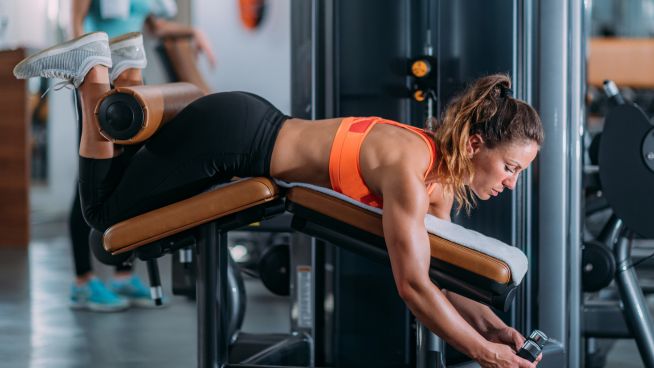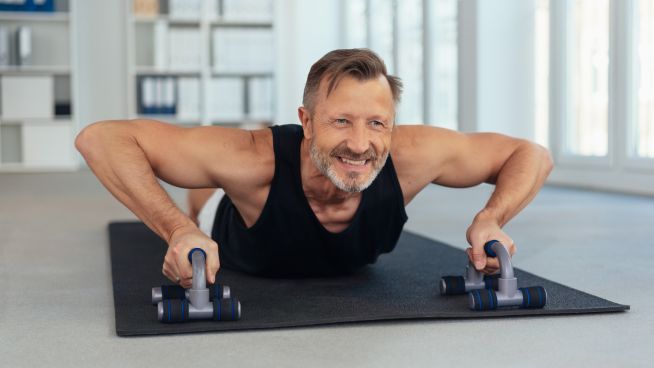How to Protect Yourself From Heat Stroke This Summer
When you hear the word “stroke,” you probably think, “happens to old people, not me.” But heat stroke—a medical emergency where the body’s core temperature reaches or exceeds 105 degrees Fahrenheit, damaging the brain and other internal organs—is a whole other ball game. Though heat stroke mainly affects people over age 50, it also takes a toll on healthy young athletes.
In fact, we’re in the midst of a ripe time of year for athletes to suffer this condition. During the summer, many football and soccer teams do “two-a-days” in the heat to get players in shape. Effective? Sure. But if the mercury climbs high enough and the exertion level at practice is hard enough, heat stroke becomes a possibility. (Find out how you can beat the heat during two-a-days.)
Heat stroke usually follows a progression from milder heat-related symptoms like nausea, cramps, or fainting, which occur during or after exercise. Other common symptoms include seizures, confusion, disorientation, and sometimes loss of consciousness or coma. Heat stroke itself causes a rapid heartbeat, plummeting blood pressure and problems breathing. If you or any of your teammates appear to be suffering these symptoms, call 911 pronto. Any delay can be fatal. Learn more about how heat stroke affects an athlete’s body.
If you are training in the heat, make sure to hydrate regularly; don’t wait until you’re thirsty. You probably don’t need to take salt tablets, though, unless your doctor tells you to. Take breaks to cool down every 30 minutes. And be on the lookout for heat-related complications:
Heat cramps, which increase the more and harder you work in the heat (running, jumping, or even gardening). Your skin gets cool, and your muscles tighten up. If any of this occurs, get to a cool area, drink cool water or fluids with electrolytes and apply ice packs.
Heat edema, which makes ankles and feet swell. Again, get into a cool area. Elevate your legs and drink water, cooled if possible. If the swelling doesn’t ease, call the doctor.
Heat exhaustion means you’re headed toward heat stroke! You may be dizzy, weak, and nauseated; have a rapid heartbeat; and be sweaty and chilly at the same time. Get into a cool area, preferably an ED (Emergency Department). Cool down, drink water (about half a glass every 15 minutes), and get medical care if you don’t feel better soon.
RECOMMENDED FOR YOU
MOST POPULAR
How to Protect Yourself From Heat Stroke This Summer
When you hear the word “stroke,” you probably think, “happens to old people, not me.” But heat stroke—a medical emergency where the body’s core temperature reaches or exceeds 105 degrees Fahrenheit, damaging the brain and other internal organs—is a whole other ball game. Though heat stroke mainly affects people over age 50, it also takes a toll on healthy young athletes.
In fact, we’re in the midst of a ripe time of year for athletes to suffer this condition. During the summer, many football and soccer teams do “two-a-days” in the heat to get players in shape. Effective? Sure. But if the mercury climbs high enough and the exertion level at practice is hard enough, heat stroke becomes a possibility. (Find out how you can beat the heat during two-a-days.)
Heat stroke usually follows a progression from milder heat-related symptoms like nausea, cramps, or fainting, which occur during or after exercise. Other common symptoms include seizures, confusion, disorientation, and sometimes loss of consciousness or coma. Heat stroke itself causes a rapid heartbeat, plummeting blood pressure and problems breathing. If you or any of your teammates appear to be suffering these symptoms, call 911 pronto. Any delay can be fatal. Learn more about how heat stroke affects an athlete’s body.
If you are training in the heat, make sure to hydrate regularly; don’t wait until you’re thirsty. You probably don’t need to take salt tablets, though, unless your doctor tells you to. Take breaks to cool down every 30 minutes. And be on the lookout for heat-related complications:
Heat cramps, which increase the more and harder you work in the heat (running, jumping, or even gardening). Your skin gets cool, and your muscles tighten up. If any of this occurs, get to a cool area, drink cool water or fluids with electrolytes and apply ice packs.
Heat edema, which makes ankles and feet swell. Again, get into a cool area. Elevate your legs and drink water, cooled if possible. If the swelling doesn’t ease, call the doctor.
Heat exhaustion means you’re headed toward heat stroke! You may be dizzy, weak, and nauseated; have a rapid heartbeat; and be sweaty and chilly at the same time. Get into a cool area, preferably an ED (Emergency Department). Cool down, drink water (about half a glass every 15 minutes), and get medical care if you don’t feel better soon.

